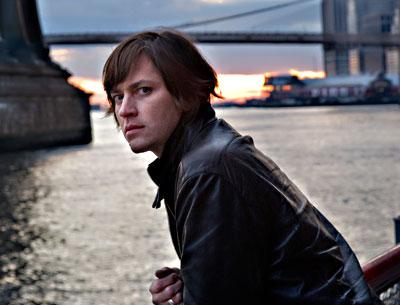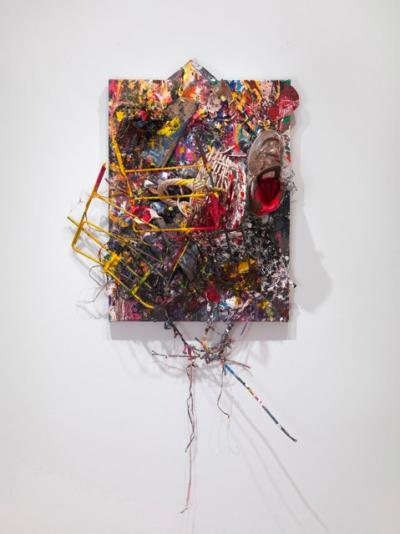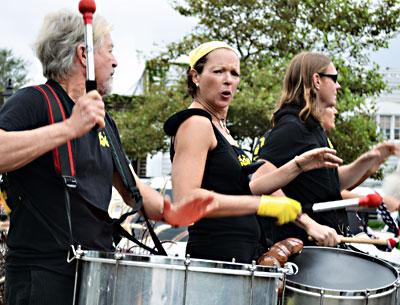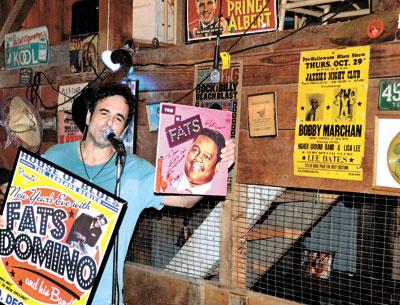SEPTEMBERFEST: Tons of Tunes, Buckets of Chow
SEPTEMBERFEST: Tons of Tunes, Buckets of Chow

An abundant harvest of South Fork food, beer, wine, history, art, music, and other entertainment will fill Southampton this weekend during the village’s SeptemberFest, which will kick off with a concert by New Life Crisis under a tent in Agawam Park tomorrow night.
Music can be heard on Saturday from noon through the early evening, when the festival’s headliner, Rhett Miller, the former front man of Old 97s, will perform with his Serial Lady Killers at 6. A wide range of musical and culinary tastes can be savored before and after the main act and throughout the day on the streets of the village.
Described by organizers as a traditional harvest festival with a modern spin, the event has grown since last year, its first, when it was the Southampton Historical Museum’s Harvest Day. With the help of the Southampton Chamber of Commerce and Southampton Village, the Parrish Art Museum, Rogers Memorial Library, and the Southampton Cultural Center, it is now a two-day event with activities for every age and interest.
Tomorrow night’s delicacies will include local wine, craft beer, and gourmet food. New Life Crisis, an independent mash-up band with a Bono-look-alike front man, Paul Mahos, will play covers from U2 to Elvis Presley as well as original songs. Ticket sales to the 6:30 p.m. show will benefit charities supported by Southampton Rotary Club and are available at the Southampton Chamber of Commerce and on the Southampton Cultural Center’s Web site.
On Saturday, Project Vibe will set the afternoon’s tone with reggae at noon, followed by the alternative and classic rock of the Montauk Project. Big names will come from outside town, with spicy indie rock by Goldspot and folk rock and funk courtesy of Miles to Dayton.
South Fork musical flavor will be represented by Jim Turner, who will showcase his guitar and harmonica skills at the Golden Pear Cafe, and there will be street music all day on the steps of Village Hall by Nick Kerzner, Leah Laurenti, the Prelude String Ensemble, Charles Certain, Sara Hartman, and the Watson Collective. After the Rhett Miller show in the park, a Rising Stars piano series performance by Tanya Gabrielian at 7 p.m. will end the festivities.
Aside from music, other events will take place throughout the village on Saturday from 10 a.m. through 4 p.m., with treats to include a free ride on a horse-drawn stagecoach and fun, historical theatrics from the Southampton Historical Museum, such as a 19th-century wedding re-enactment. Costumed Civil War-era patriots will also be on hand, as will trade and craftsmen demonstrating decoy carving, blacksmithing, and basketry.
Among the strolling street performers will be Keith Leaf, a stilt-walker, and Jester Jim and his comedic juggling and magic acts. The Maniac Pumpkin Carvers will expand upon the age-old art on the steps of Village Hall, and face painting, airbrush tattoos, and pumpkin painting will take place there, too. A traditional hayride will be offered at 1:30 p.m. in front of the chamber of commerce building on Main Street, where donations will be welcomed.
More than a dozen clam chowders from restaurants and cafes in Southampton will be judged by residents beginning at noon in Agawam Park, with the winners to be announced at 3 p.m. At a farmers market at 25 Job’s Lane on Saturday, there will be food, wine, and craft beer from top local caterers, restaurants, vineyards, and brewers, as well as homemade wares.
Southampton’s rich cultural heritage will be celebrated with a juried art show of paintings, prints, mixed-media works, photography, and sculpture at the Southampton Cultural Center at 25 Pond Lane until 6 p.m. Just up the road, treasures can be found in the form of books at a Rogers Memorial Library sale.






